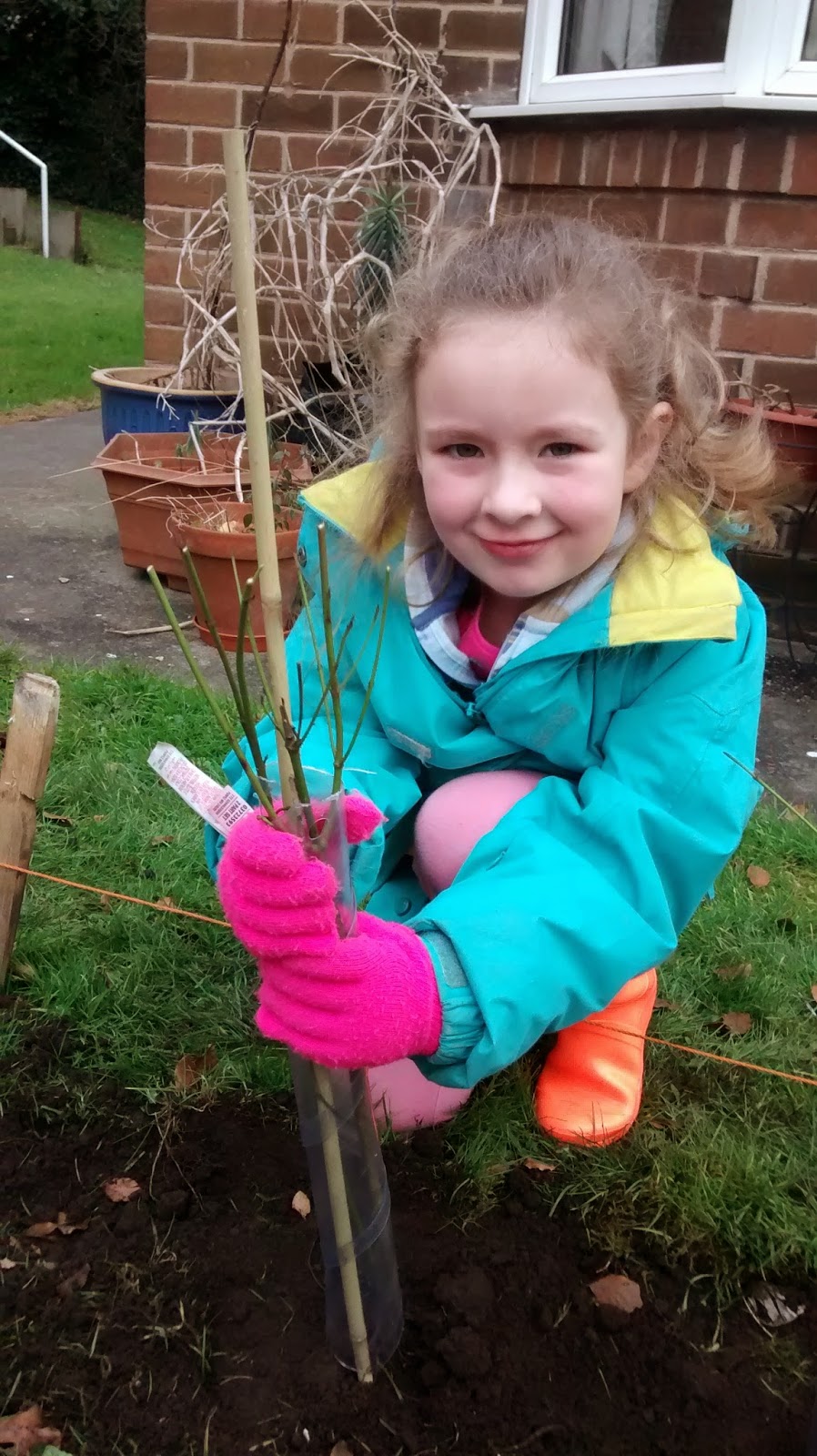 |
| Digging a trench for the hedge |
By 1pm we had chopped and cleared large areas of brambles (opening up the bottom corner of the garden for the first time), trimmed low-hanging branches from trees and seriously pruned back the bushes and generally created a much bigger space to work with. This is the stuff that memories are made of: working together for a common goal, laughing together as we learn new skills and create something beautiful, eating together when we were done (the local chippy got lots of business today!)
 |
| Wrapping the new hedge to protect from rabbits |
The next task in a few weeks’ time will be to get professional help to level the site and apply a chainsaw to the dead trees and trim larger branches from the existing trees to give them a better shape. This is a site which has been benignly neglected for years, so it will require several years of tending to make it all that we dream of it, but it is good to see how much difference we can make before the summer growing season.
Things I learned today
- How to lay a hedge (with expert tuition from Kath, a gardener by trade). The hedge was made using “whips”, that is, just the woody stalks and roots (thoroughly soaked in water) planted during the season when the plant is dormant so that you don’t need to plant it with leaves on. Having created a shallow trench and forked it over, the secret is to place the whips in the trench a foot apart (measured using my boot), add a little organic plant food to help the roots take hold and then “heel” them in (using my boot again!) to ensure that there is no air around the roots which could cause water to collect and allow them to rot instead of grow.
- How to build a turf stack: having cut a line of turf to make a trench to lay the hedge in and knocked off most of the excess soil, we want the turf to rot down to a good loam for re-use. The turf stack facilitates that by building essentially a small compost heap from several layers of turf, grass side down.
- How to stand exactly the right distance from a fire to throw any size of branch on without getting too hot (the particularly challenging version is to select the right distance for your friend's children who really want to have a go, but can’t throw very far! Occasionally I had to resort to shouting “one, two, three: Throw!” followed by a second throw by me…)
- Acomb Community Garden: The Story So Far
- If there is no home for nature – why wildlife matters to all of us
- How my church is taking on the challenge of installing a renewable ground source heating system
- If you think that transforming a small wilderness is a challenge, try turning a 36 hectare former landfill site into a nature reserve and creating long lasting community relationships while you’re at it. St Nick’s Fields in York and A Rocha’s Minet Fields in Southall (featured in the book "God Doesn't Do Waste" by Dave Bookless, which I can't recommend enough) are both major inspirations for the garden project at Acomb.

No comments:
Post a Comment